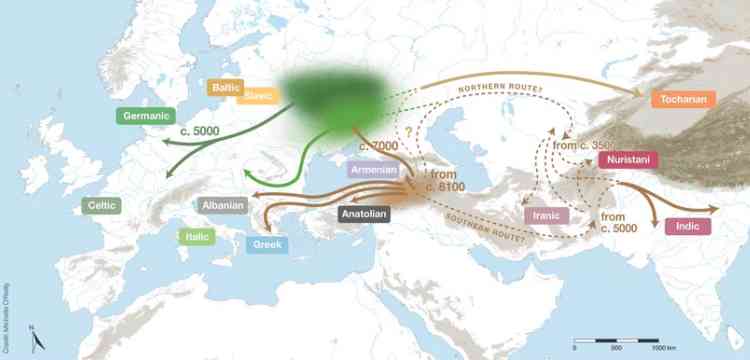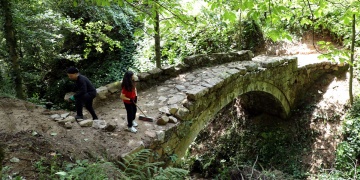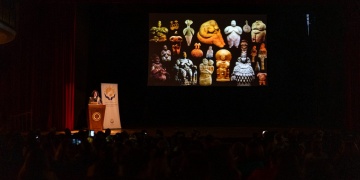According to analysis of related words the ancestor of the Indo-European languages may have been spoken by farmers in southern Turkey 8,000 years ago.
*****************************************
The common ancestor of Indo-European languages, which are now spoken by close to half the world’s population, was spoken in the eastern Mediterranean around 8000 years ago, according to an analysis of related words. Indo-European languages, spanning from English to Sanskrit, have long been thought to share a common ancestor. The first linguist to make this link, William Jones, said in a lecture in 1786 that no linguist could examine Greek, Latin and Sanskrit together “without believing them to have sprung” from some common ancestor. But researchers have struggled to agree on the origin story of this so-called proto-Indo-European language, says Paul Heggarty, who is now at the Pontifical Catholic University of Peru. There are two main hypotheses, he says. The first suggests that the language originated in the steppe region, north of the Black Sea, no earlier than 6500 years ago and then spread across Europe and parts of Asia with the domestication of horses. The second, known as the farming theory, argues that the language was spoken far earlier and originated in the north of the Fertile Crescent, in what is now south-east Turkey and north-west Iran, as early as 9500 years ago and spread to other regions with the rise of farming.*****************************************
Origins of the English language can be traced back about 8,000 years to prehistoric farmers living south of the Caucasus in what is now eastern Turkey and north-western Iran.
That’s according to research led out of Germany and drawing on University of Auckland expertise. The finding comes after 200 years of debate about when and where the Indo-European family of languages began.
Northern parts of the so-called Fertile Crescent, a region hospitable for farming that curves from the Mediterranean Sea to the Persian Gulf, may have been where Proto-Indo-European was first spoken.
Indo-European languages are the world’s most-spoken family of languages, numbering more than 400 and including English, Russian, French, Gaelic, Hindi-Urdu, Bengali and Punjabi.
One of the study’s lead authors, Professor Russell Gray, of the Max Planck Institute for Evolutionary Anthropology in Germany, is also a professor at the School of Psychology at Waipapa Taumata Rau, University of Auckland. He described the findings as “robust.”
An international team of over 80 language specialists analysed the spread of core vocabulary from 161 Indo-European languages, including 52 ancient or historical languages, such as Latin and Vedic. Contributing from the University of Auckland were Dr Simon Greenhill in the School of Biological Sciences, Dr Remco Bouckaert in the Department of Computer Science and Professor Quentin Atkinson in the School of Psychology.
Proto-Indo-European is about 8,100 years old, with seven main branches already split off by about 7,000 years ago, according to the scientists, who claim better data and methodologies than previous studies.
The research, published in the journal Science, may lead to reassessments of the two theories which previously dominated the debate.
The “Steppe” hypothesis suggested an origin about 6,000 years ago in the Pontic-Caspian Steppe, an area running through today’s Bulgaria, Romania, Moldova, Ukraine, Russia and Kazakhstan.
The “Anatolian” or “farming” hypothesis suggested an origin 8,000-9,000 years ago tied to the dawn of agriculture in Anatolia, part of today’s Turkey.
The new research suggests Indo-European languages began around Anatolia and moved northwards onto the Steppe, which served as the homeland to the languages which eventually entered Europe.
“Ancient DNA and language phylogenetics thus combine to suggest that the resolution to the 200-year-old Indo-European enigma lies in a hybrid of the farming and Steppe hypotheses,” says Gray.
For the University of Auckland, the research was the third instalment in 20 years of work, which began with a 2003 paper by Gray and Atkinson in the scientific journal Nature.
“This really vindicates our earlier work,” says Atkinson. “The genes and the languages are telling us we were right to challenge the status quo Steppe origin theory.
Languages that derive from the same former ancestor language retain signals of that past origin, and of their divergence since then. By meticulously comparing the languages within a family it is possible to reconstruct aspects of their common ancestor language.
Source: University of Auckland
***************************************** *****************************************







 Ressam Serdar Abay, tarihi kemer köprüdeki yabani otları kızıyla temizledi
Ressam Serdar Abay, tarihi kemer köprüdeki yabani otları kızıyla temizledi  Archaeologists have discoveried a crusader altar in the Church of the Holy Sepulchre
Archaeologists have discoveried a crusader altar in the Church of the Holy Sepulchre  Komodo ejderinin demir dişli olduğu anlaşıldı
Komodo ejderinin demir dişli olduğu anlaşıldı  Doğa Taşlardan, Anadolu Tanrıçaları'ndan sonra Anadolu Bacılarının öykülerini anlatacak
Doğa Taşlardan, Anadolu Tanrıçaları'ndan sonra Anadolu Bacılarının öykülerini anlatacak 




